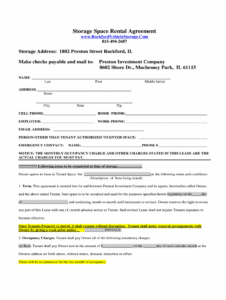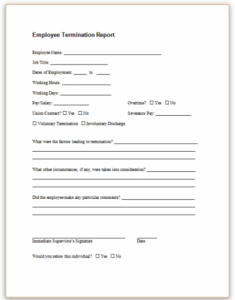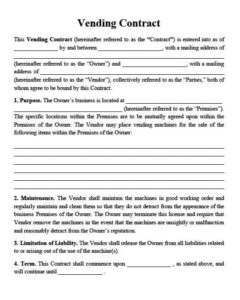Sometimes, even the most well-intentioned agreements need to come to an end. Life and business are dynamic, and circumstances can change, making a contract no longer viable or desirable for one or both parties. When such situations arise, a mutual understanding and a clear path to dissolving the agreement become paramount, ensuring a smooth transition for everyone involved without unnecessary drama or legal entanglement.
This is where the concept of mutual termination truly shines. Instead of one party unilaterally breaching or struggling with an obligation, both sides can collaboratively decide to part ways. This amicable approach protects relationships, minimizes potential disputes, and allows everyone to move forward cleanly. To facilitate such a process effectively, a structured approach is essential, and that’s precisely what a good template provides.
Why a Mutual Termination is Often the Best Way Forward
Ending a contractual relationship can be tricky business. Often, it’s not due to a failure or dissatisfaction, but rather a shift in strategy, an unexpected change in resources, or simply that the initial objective has been fulfilled in a different manner than anticipated. Unilateral termination can often lead to accusations, legal battles, and soured relationships, which are costly in terms of time, money, and future opportunities.
A mutual termination, on the other hand, is born out of agreement and cooperation. It acknowledges that both parties recognize the need to conclude the contract and are willing to work together to formalize its end. This approach is far more conducive to maintaining professional integrity and opens the door for future collaborations, even if the current one is concluding. It’s about finding common ground to gracefully exit an obligation.
Key Benefits for Both Parties
- Reduced Litigation Risk: By mutually agreeing to terminate, both parties waive potential claims related to the contract’s continuation, significantly lowering the chance of future lawsuits.
- Preserved Business Relationships: An amicable parting keeps doors open. It shows respect and professionalism, which can be invaluable for networking and future ventures.
- Clear and Definitive End Date: It provides certainty, clearly stating when obligations cease, allowing both parties to plan their next steps without ambiguity.
- Flexibility in Terms: Unlike strict breach clauses, mutual termination allows for negotiated terms regarding outstanding obligations, making the exit strategy much more adaptable.
This consensual approach ensures that both sides feel heard and respected throughout the process. It allows for a discussion of any remaining responsibilities or financial settlements in a constructive environment, rather than an adversarial one. Think of it as a handshake goodbye rather than a heated argument.
Ultimately, having a comprehensive mutual termination of contract template simplifies this entire process. It guides both parties through the necessary steps to ensure that every critical aspect is addressed, leaving no stone unturned and preventing future misunderstandings. It takes the guesswork out of what could otherwise be a legally complex situation.
Essential Elements Your Template Should Include
When you’re looking to formalize the end of a contract, relying on a robust template is incredibly beneficial. It ensures that you don’t overlook crucial details that could lead to problems down the line. A well-designed mutual termination of contract template acts as a checklist, making sure every significant point is covered and agreed upon by all involved parties. It provides a legal framework for a clean break.
The goal is to create a document that clearly states the intent to terminate and outlines the terms of that termination. This clarity protects both sides. Without a structured agreement, ambiguities can linger, potentially causing headaches or even legal disputes well after you thought the contract was over. Therefore, knowing what to look for and include is paramount.
Here are the key components that every effective mutual termination of contract template should feature:
- Identification of Parties: Clearly name all individuals or entities involved in the original contract, along with their contact information.
- Original Contract Details: Precisely reference the original agreement being terminated, including its title, date, and any identifying numbers.
- Statement of Mutual Consent: An explicit declaration that both parties willingly and freely agree to terminate the contract.
- Effective Date of Termination: The exact date when the original contract’s obligations officially cease to be in effect.
- Outstanding Obligations: A detailed section outlining any remaining duties, payments, or deliveries that must be completed by either party post-termination.
- Release and Waiver of Claims: A crucial clause where both parties release each other from any future liabilities or claims arising from the original contract.
- Confidentiality: Reaffirmation or establishment of any confidentiality requirements that survive the termination of the main contract.
- Governing Law: Specification of the jurisdiction whose laws will govern the interpretation and enforcement of the termination agreement.
- Signatures: Dedicated spaces for all parties to sign, print their names, and date the document, affirming their agreement.
While a template provides an excellent starting point, remember that each situation is unique. It’s always a good idea to tailor the template to your specific circumstances and, for complex situations, consider seeking legal advice to ensure it fully meets your needs and complies with local regulations. The purpose of a mutual termination of contract template is to empower you with a solid foundation, allowing for customization to fit the precise nature of your agreement.
Navigating the conclusion of a contractual relationship doesn’t have to be a source of stress or conflict. By approaching it with a spirit of cooperation and utilizing a comprehensive template, you can ensure that all parties conclude their obligations cleanly and without lingering issues. This structured approach provides peace of mind, allowing everyone to move forward confidently to their next venture.



